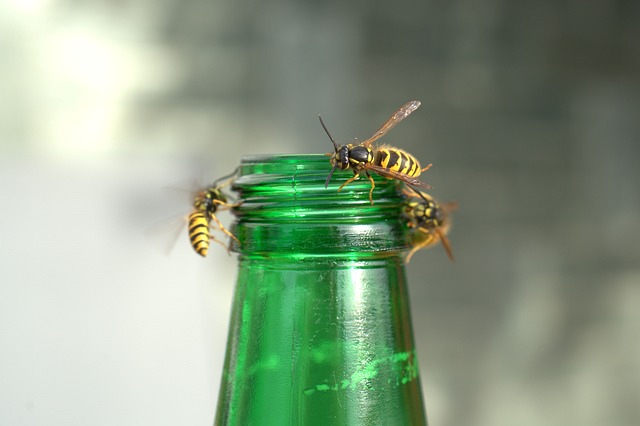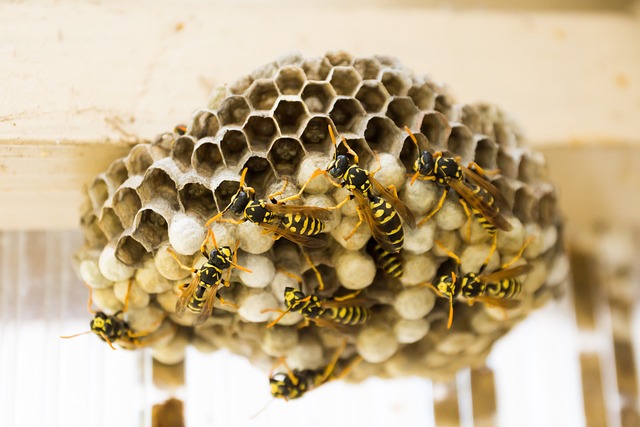As the warm embrace of spring unfurls, so does the emergence of buzzing, winged creatures – wasps. Their presence throughout the seasons marks a cyclic rhythm in nature, each phase playing a pivotal role in their lifecycle.
But do wasps die in the winter, or are they year-long pests?
Keep reading, and we’ll uncover everything you need to know about wasp seasonality and whether or not these pests will stick around into the cold season.
How Long Do Wasps Live?
Wasp seasonality is marked by specific patterns extending from spring through winter. These insects engage in activities like nest building, foraging, and reproduction, distinct to each season. Understanding their lifecycle unveils insights into their behaviors and survival tactics.
Understanding wasp seasonality requires acknowledging their relatively short individual lifespan, unlike perennial honeybees. From egg to adult, the stages of a worker wasp’s life are brief, lasting only a few weeks or months. Despite this brevity, they can still make a major impact on the ecosystem and your backyard.
The life cycle of a wasp progresses through stages – egg, larva, pupa, and adult – each contributing to their species’ continuity and colony sustenance. With changing seasons, their activities pivot, symbolizing a cyclical journey through life.
Understanding Wasp Seasonality
With the onset of spring, queen wasps emerge from hibernation, seeking suitable sites to build their nests. These solitary queens initiate the construction of small nests and lay eggs, beginning the cycle of colony expansion.

As the first eggs hatch, the newly emerged workers take over nest-building and foraging duties. Their primary focus is nurturing the growing colony, caring for the queen, and gathering food resources.
Summer Colony Expansion
During summer, wasp colonies flourish and reach their peak population. With more workers buzzing about, the new members focus on feeding the developing larvae, expanding the nest, and defending the colony territory.
During this season, adult wasps intensify their foraging activities, seeking nectar, sugary substances, and protein-rich food sources to sustain the colony. As wasp populations rise, humans and wasps may increasingly have unwanted encounters, often leading to nest disturbances or stings.
Autumn Transition: Decline and Preparations for Winter
As temperatures drop and food sources dwindle, wasps’ behavior changes. The focus shifts from colony growth to preparing for the impending winter. The remaining foraging wasps will be highly aggressive, even prepared to attack humans for the scarce resources available.
Queen wasps cease egg-laying and begin producing new queens and males, essential for the species’ survival. From here, new queens and male mates are born and eventually leave the nest to create other colonies.
Do Wasps Die in the Winter?: Overwintering Strategies
Contrary to honeybees that maintain their colonies throughout winter, most worker wasps do not survive the cold months. As temperatures plummet, worker wasps, sterile females, and males die off, leaving behind the new queens that seek shelter to hibernate.
These mated queens survive winter by finding protected spots, such as under tree bark or within buildings, waiting for the warmth of spring to begin the cycle anew.
The mated queens’ ability to endure winter largely determines the fate of the species. Their hibernation is crucial, ensuring the continuity of the colony in the coming spring. Surviving the harsh conditions becomes paramount for the queens to restart the lifecycle and establish new colonies.
The survival of wasp species heavily relies on the hibernating mated queens. These queens have fat reserves and mechanisms to withstand cold temperatures during their hibernation phase. They seek sheltered locations in cracks, crevices, or human-made structures to protect themselves from the harsh winter conditions.
Some species of wasps produce a natural antifreeze-like substance, glycerol, which helps them endure freezing temperatures. By lowering their metabolic rate and entering a state of diapause, a form of suspended animation, they conserve energy during winter.
Lifespan and Survival Strategies of Wasps
Individual paper wasps, part of the Polistes genus, live for about a year. However, the lifespan of an individual worker within the colony is relatively short, lasting only a few weeks during the active season.
Yellowjackets, belonging to the Vespula and Dolichovespula genera, have a similar pattern. Worker yellowjackets live for several weeks, while queens can survive for a year or more.
Wasps are highly sensitive to temperature changes. Severe cold snaps or extended periods of freezing temperatures can significantly impact their survival rates, especially for queens seeking sheltered spots to overwinter.
So, do wasps die in the winter? The previous spirng’s hive won’t make it through the chilly season. If the newly mated queen manages to withstand the chill and survive off her stored fat reserves, she can make it out of hibernation and build her new nest.

Because wasps aren’t a major concern during winter, it’s important to focus your pest control efforts on the months they’re most active. Whenever the first sunlight of spring peaks through the clouds, it’s time to contact proof. about your next pest control treatment.
With regular maintenance and inspections, you can stay one step ahead of pests. Contact us today!

